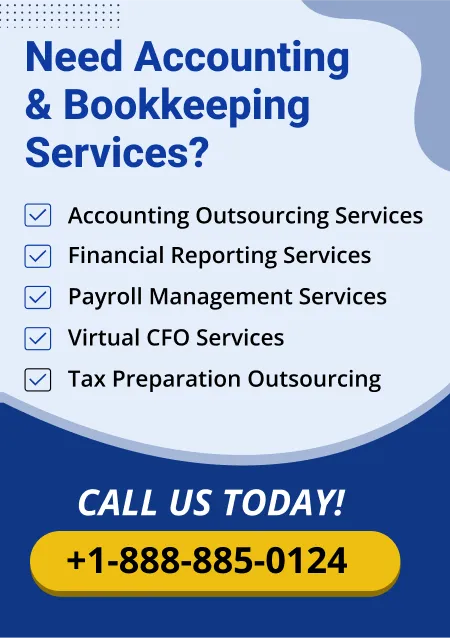The financial carcass of any business is built of AR or accounts receivable. AR refers to the amount of money the customers owes the business after they have been supplied goods/services. It ensures your business is effectively handling cash-flow and shows how efficient the credit system of your business is. When your business delivers goods or services on credit, it appears as AR in the balance sheet. Managing AR effectively is possible by handling cash flow efficiently and making sure it is collected on-time. This article examines the idea of accounts receivable services, presents management best practices, and offers examples.
Digging closer to the what’s of Accounts Recievable
- The amount of funds owed by customers to a business for services or products provided on credit is known as accounts receivable.
- Since these receivables typically are anticipated to be recovered within thirty to ninety days, subject to the terms stated by the business, they are recorded as short-term assets on the balance sheet.
- The danger of non-payment grows with the length of an existing receivable; this can have an adverse impact on cash flow and financial health as a whole.
- Businesses frequently provide credit to their customers in an effort to enhance relations with customers and boost income. Strong credit management processes must be in place because, while this can result in more earnings, it additionally raises the likelihood of missed or delayed payments.
Cases for Accounts Receivable
- A Retail Store: Let's say a bulk clothing supplier provides a retail store 2,100 shirts with a payment time frame of 60 days. Until the retail store makes the payment, the vendor would list the worth of the garments as accounts receivable on its financial statement.
- A Service Provider: A company specialising in digital marketing designs a social media campaign on the behalf of an individual and agrees to paying the consumer upon campaign end. $5,000 is invoiced by the agency, and until the client pays, the sum gets added to the agency's accounts receivable.
- Subscription-Based Businesses: A software company that provides yearly subscription services might offer its clients the option to pay after 30 days after getting an invoice. The sum that consumers owe for the purchase of the subscription will be marked as accounts receivable.
All the cases listed above have one thing tying together. The suppliers have delivered their goods/services and are yet to receive their payments. So, this is marked as accounts receivable until the payment is delivered.
The why’s of Accounts Receivable
- Receivables have an effect on revenue and liquidity, making them significant.
- Efficient AR management ensures an ongoing revenue flow, allowing the business to cover its expenses and make investments in potential growth.
- Conversely, inadequate care of accounts receivable can end up in problems with cash flow, a rise in debt, and a reduction of financial flexibility.
- Businesses with major clients receivable that fail to be paid on time may find it difficult to meet their own monetary obligations, such paying suppliers, staff, or investment costs.
- Thus, keeping a sound financial position needs excellent accounts receivable management.
Keeping it clean: Best practices to manage accounts recievable
1. Keeping clear policies for credit requirements
Successful accounts receivable management begins by establishing clear, consistent guidelines for credit. This entails establishing credit limits and terms and conditions to suit different customer types. Businesses may avoid misunderstandings and lessen the likelihood of late payments by providing an explicit explanation of these policies. In addition, businesses must regularly assess the financial standing of current as well as prospective customers in order to prevent providing credit to clients that pose a significant risk.
2. The need of the hour:Prompt and Accurate Invoicing
Accurate and timely invoicing is essential to accounts receivable management. Make sure that as soon as a service or product is provided, invoices are sent out. All relevant data, including terms of payment, time constraints, and an explanation of the costs, should be included on the invoice. Delays in payments might result from errors or confusion in invoices, thus it's essential to have a system that ensures accuracy and timeliness.
3. The early-bird incentives
Offering incentives for timely payments is one of the most successful strategies to get customers to pay early. For instance, a business might give consumers who pay within ten days a 2% discount. While there is an immediate drop in revenue, this improves cash flow and decreases the possibility of late payments, which can have costly long-term effects.
4. Create an Ageing Report for Accounts Receivable
Tracking unpaid bills can be done with the assistance of an AR ageing report. Receivables are divided in this report according to the invoice's age, typically in increments of 30 days. For instance, it could show sums owed for time frames ranging from 0–30, 31–60, and 61–90 days. This helps businesses in setting objectives for their collection efforts and point out any discrepancies before the money becomes uncollected.
5. Keeping up with the records:Check in with Past-Due Accounts
Implementing efficient follow-up procedures is crucial for managing past-due accounts. Develop a procedure for following up with clients whose bills are past due and issuing reminders. For bills that are only a few days over due, start with a courteous reminder and escalate the conversation if needed. It can be vital to suspend credit terms or seek legal proceedings to collect the debt if the customer frequently misses repayments.
6. Evolving World:Automate the Process using Technology
Automation has an important effect on how effectively accounts receivable are handled. Reminders, payment tracking, and automated invoicing are functions found in many accounting software programs. As a result, the finance team's administrative workload reduces and crucial tasks like mailing invoices and following up on payments that are past due are not overlooked.
7. Keeping bonds uptight: A healthy relationship with clients
Sustaining good interactions with customers could help in guaranteeing timely payments. Maintaining frequent communication, being truthful and forthcoming, and being flexible if necessary will build trust and encourage clients to give your bills their highest priority. Customers are far more likely to comply with their credit terms and provide on-time payments when they feel valued.
Final Thoughts
For businesses of every kind, accounts receivable is a crucial component of financial management. Improved cash flow, a lower chance of bad debt, and a better financial standing may come from efficient AR management. Through the use of the best techniques like explicit credit policies, prompt invoicing, and prompt follow-up on past-due accounts, businesses may improve their accounts receivable process and guarantee fiscal stability. And if your business is looking for allocating Accounts payable outsourced services, then Fino Partners got your back.
READ ALSO | Accounts Receivable: Definition, Examples, and Management Tips



























